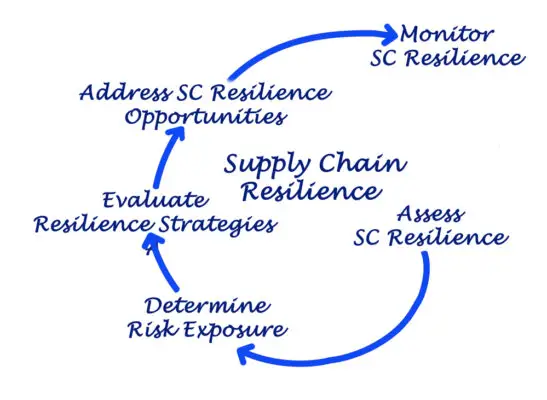Business continuity plans are prepared, invoked, and rehearsed through a structured approach:
- Preparation: This involves identifying key business processes, potential risks, and developing strategies to mitigate disruptions. It also includes creating the business continuity plan document.
- Invocation: When an actual disruption occurs, the business continuity plan is invoked, and the predefined procedures are put into action to ensure the continuity of essential business operations.
- Rehearsal: Regular drills and exercises are conducted to test the effectiveness of the plan. This may involve simulation of various disaster scenarios to ensure that the plan is robust and the personnel are well-prepared to execute it when needed.
Organizations can enhance their readiness to handle unexpected events and maintain operational continuity (source: Business continuity planning | Business Queensland).
Business Continuity Plans are diligently crafted, swiftly activated when necessary, and regularly practiced to bolster organizational resilience. They involve identifying risks, evaluating impacts, and prioritizing mitigation strategies.
Crisis management teams are promptly assembled, communication channels established, and mitigation measures initiated upon invocation. Protocols are refined based on past incidents, roles clarified, and feedback utilized for continual enhancement.
Skill assessments, resource availability, and training needs are regularly evaluated. Continuous refinement through rehearsals and feedback loops guarantees plan effectiveness.

The meticulous preparation, swift invocation, and regular rehearsal of Business Continuity Plans are crucial for organizational resilience in challenging times, ensuring operational stability and preparedness for unexpected disruptions.
Key Takeaways
- Develop a resilient plan with clear roles and responsibilities.
- Regularly update the plan and address weaknesses.
- Notify key personnel promptly during plan invocation.
- Establish clear communication channels and mitigation measures.
- Rehearse plan activation procedures for effectiveness.
Risk Identification and Impact Assessment
Risk identification involves recognizing potential threats that could affect business operations.
Impact assessment evaluates the consequences of these risks on critical functions.
Organizations utilize various methods such as risk registers, interviews, and workshops to identify and assess risks effectively.
Prioritizing risks based on their potential impact is essential for developing a resilient business continuity plan.
Risk Identification Methods
Conducting a thorough business impact analysis is essential for identifying potential threats and vulnerabilities that could impact organizational operations in business continuity planning.
Risk identification methods involve techniques like brainstorming, surveys, interviews, and historical data review to assess risks and their impacts.
This process includes analyzing both internal and external factors that have the potential to disrupt business operations.
Tools such as risk matrices, risk registers, and scenario analysis aid in prioritizing risks based on their likelihood and impact levels.
Continuous monitoring and updating of risk identification methods are vital to guarantee that new threats are captured and addressed effectively in the business continuity plan. By employing these strategies, organizations can strengthen their resilience against potential disruptions and enhance their overall preparedness.
Impact Assessment Techniques
To effectively evaluate potential disruptions to business operations, organizations employ impact assessment techniques that analyze the ramifications of identified risks on various aspects of their functioning.
Impact assessment involves identifying risks, such as financial losses, reputation damage, operational disruptions, and regulatory compliance issues.
Methods like financial modeling and scenario analysis are utilized to quantitatively estimate the potential impact of these risks.
This assessment helps prioritize risks for mitigation within business continuity programs and guides the development of strategies to guarantee operational resilience.
Risk Mitigation Strategies
In evaluating the potential threats to business operations and their corresponding impacts, organizations engage in a systematic process of identifying risks and evaluating their consequences on critical functions.
Effective risk mitigation strategies are essential for developing a robust business continuity plan and ensuring organizational resilience.
To evoke emotion in the audience, consider the following:
- Fear: Understanding the grave consequences of unaddressed risks can instill fear in stakeholders.
- Hope: Implementing mitigation strategies provides hope for continuity and stability in times of crisis.
- Confidence: Having a well-thought-out plan boosts confidence in the organization’s ability to overcome challenges.
- Responsibility: Taking proactive steps to mitigate risks demonstrates a sense of responsibility towards stakeholders.
Plan Invocation Procedures and Mitigation
When a disaster strikes, businesses need to follow specific steps to activate their continuity plans and implement strategies to mitigate the impact on critical operations.
The process involves promptly notifying key personnel, evaluating the situation, and executing recovery measures to maintain business continuity.
Plan Activation Steps
During a disruptive event or crisis situation, the activation of a business continuity plan involves a series of critical steps to guarantee prompt response and effective mitigation strategies.
- Alert key personnel promptly to secure rapid mobilization.
- Assemble the crisis management team for coordinated decision-making.
- Establish clear communication channels for seamless information flow.
- Initiate mitigation measures such as activating backup systems, relocating to alternate facilities, and implementing emergency response protocols.
These steps are crucial in ensuring a cohesive and efficient response to disruptions, safeguarding essential business functions.
Regularly rehearsing plan activation procedures through tabletop exercises and simulations enhances organizational preparedness and response capabilities for real-world emergencies.
Impact Mitigation Strategies
To effectively mitigate the impact of disruptions and guarantee the continuity of critical operations, businesses must meticulously outline specific triggers and criteria that dictate the invocation of their continuity plans.
These triggers serve as indicators for when to activate mitigation strategies, which include predefined actions aimed at stabilizing operations and minimizing losses.
Invocation procedures involve activating emergency response teams, notifying key personnel, and implementing recovery strategies promptly.
Conducting tabletop exercises is essential to rehearse the plan, ensuring that staff are prepared to fulfill their roles effectively.
Regular reviews and updates based on lessons learned from these exercises enhance the plan’s effectiveness in mitigating the impact of incidents, contributing to a more resilient business continuity framework.

Rehearsal Exercises for Plan Testing
Rehearsal exercises play an essential role in testing the effectiveness of business continuity plans. These exercises provide organizations with an opportunity to identify weaknesses, refine procedures, and enhance overall preparedness for emergencies.
Tabletop Exercise Benefits
Conducting tabletop exercises is a valuable practice for organizations to enhance the effectiveness of their business continuity plans. Tabletop exercises involve simulated scenarios where team members discuss and walk through the plan, focusing on communication and decision-making skills.
These exercises help identify gaps in the plan, assess team members’ roles and responsibilities, and evaluate the plan’s feasibility.
They are cost-effective and time-efficient ways to test the plan without disrupting operations. Regular testing through tabletop exercises guarantees that the plan remains up-to-date and relevant, capable of addressing various threats and challenges.
- Enhances communication and collaboration among team members.
- Improves decision-making skills under pressure.
- Identifies gaps in the business continuity plan effectively.
- Evaluates the feasibility and effectiveness of the plan in different scenarios.
Simulation Testing Importance
Evaluating the effectiveness of a business continuity plan through simulation testing is essential for organizations to assess response procedures in a controlled environment.
By conducting scenario-based exercises, organizations can simulate real-life disruptions, test response and recovery procedures, and identify gaps and weaknesses in their continuity plan. This process helps validate the plan’s viability, assess team readiness, and enhance overall preparedness for emergencies.
Regularly rehearsing with simulation testing ensures that staff understand their roles and responsibilities during a crisis, leading to a more coordinated response. Below is a table summarizing the key aspects of simulation testing in enhancing business continuity preparedness.
| Aspects | Importance | Purpose |
|---|---|---|
| Validate Plan Viability | Confirms plan effectiveness | Confirming the plan can address various disruptions |
| Staff Roles and Responsibilities | Clarifies duties during emergencies | Ensuring clear understanding of individual tasks |
| Coordinated Response | Enhances effectiveness | Promoting a synchronized approach in crisis situations |
Refining Procedures for Effectiveness
Refining procedures for effectiveness involves optimizing protocols and refining existing processes to enhance overall performance.
By continuously evaluating and adjusting procedures, organizations can guarantee that their business continuity plans are up-to-date and aligned with current needs.
This iterative process of refinement is vital for maintaining operational resilience and readiness in the face of potential disruptions.
Procedure Optimization
Optimizing business continuity procedures involves a systematic approach to continuously enhance the effectiveness of plans through rigorous review and updating processes. To evoke emotion in the audience, consider the following:
- Updating the plan regularly guarantees alignment with business objectives and current risks, fostering preparedness.
- Identifying weaknesses and addressing gaps leads to a robust and resilient continuity strategy.
- Incorporating lessons learned from past incidents enhances the plan’s adaptability and response capabilities.
- Establishing clear roles, responsibilities, and communication channels within the organization fosters coordination and swift action during crises.
Effective Protocol Refinement
Enhancing the efficiency and relevance of procedures in business continuity planning involves a thorough review and adjustment process known as effective protocol refinement.
This process includes updating protocols based on lessons learned from previous exercises, incidents, or feedback to ensure they align with current needs. Refinement may involve streamlining communication channels, clarifying roles and responsibilities, and incorporating new technologies or resources.
Regularly refining protocols helps organizations adapt to changing threats, improve response capabilities, and maintain readiness for disruptions. Continuous refinement through rehearsals, evaluations, and feedback loops is crucial for ensuring that business continuity plans remain effective and resilient.
| Keywords | Examples |
|---|---|
| Lessons Learned | Update protocols based on previous incidents |
| Communication Channels | Streamline channels for effective information flow |
| Roles and Responsibilities | Clarify duties and obligations within the team |
| New Technologies | Incorporate tech advancements to enhance response |
Organizational Readiness Assessment
When evaluating organizational readiness for business continuity plans, key points to take into account include:
- Checking resource availability.
- Conducting skills gap analysis.
- Evaluating training needs.
These aspects help in determining the organization’s capacity to respond effectively to disruptions or crises. By focusing on these points, businesses can identify areas for improvement and enhance their preparedness to implement and rehearse business continuity plans efficiently.
Resource Availability Check
Evaluating resource availability is a critical component of organizational readiness assessments in business continuity planning.
This process guarantees that essential resources such as personnel, technology, facilities, and supplies are accessible to support continuity efforts.
Through these assessments, organizations can pinpoint gaps in resources and capabilities that may impede the successful implementation of the business continuity plan. To enhance resilience and preparedness, regular checks are essential to address deficiencies proactively.
- Guaranteeing resource availability safeguards against disruptions.
- Identifying gaps in resources enhances organizational readiness.
- Proactive measures mitigate the impact of unexpected events.
- Regular assessments bolster overall resilience and preparedness levels.
Skills Gap Analysis
To guarantee the effective implementation of business continuity plans, organizations conduct skills gap analysis to evaluate the alignment of required and available skills among personnel involved in invoking and rehearsing BCP.
This analysis helps identify training needs, resource deficiencies, and competency gaps vital for successful business continuity planning.
By evaluating current skill levels and anticipating future requirements, organizations can bridge these gaps through tailored training programs. Organizational readiness assessments, facilitated by skills gap analysis, make certain that staff preparedness is maximized for implementing and testing the business continuity plan during emergencies.
Proactively addressing skill deficiencies enhances organizational resilience, equipping them to effectively respond to disruptions and emergencies with confidence.

Training Needs Evaluation
The evaluation of training needs for organizational readiness in business continuity planning is a critical step in ensuring preparedness for implementing and testing contingency measures during emergencies.
- Reviewing current skills, knowledge, and abilities
- Identifying gaps in training for plan implementation
- Determining required training programs and resources
- Evaluating the effectiveness of existing training methods and materials
Frequently Asked Questions
What Invokes Business Continuity Plan?
Disruptive incidents like natural disasters, cyber attacks, or power outages trigger the invocation of business continuity plans. Predefined criteria determine when to activate these plans, ensuring essential business functions are maintained, disruptions are minimized, and resilience is upheld.
What Is Business Continuity Plan Invoked?
A Business Continuity Plan is invoked when a disruptive event occurs, activating predetermined response and recovery procedures. This guarantees critical operations can continue or be restored swiftly. The decision to invoke relies on the severity of the incident’s impact on normal functions.
How Do You Conduct a Business Continuity Plan?
Conducting a business continuity plan involves identifying critical functions, evaluating risks, and developing strategies for operational resilience. Plans are activated during disruptions to guarantee continuity. Regular drills and simulations are conducted to test effectiveness and enhance response capabilities.
What Plan Should You Follow When Business Continuity Management BCM Is Invoked?
When Business Continuity Management (BCM) is invoked, it is essential to follow the predefined plan outlined in the business continuity plan (BCP). This plan should include detailed procedures for responding to specific incidents or disruptions effectively.

Conclusion
Meticulous preparation, invocation, and rehearsal of business continuity plans are vital components of organizational resilience.
By identifying risks, evaluating impacts, and conducting regular exercises, businesses can enhance their readiness to navigate crises effectively.
The proactive approach of refining procedures and evaluating organizational readiness ensures that when disruptions occur, essential operations can continue with minimal interruption. This emphasis on preparedness plays a pivotal role in safeguarding operational integrity and fostering resilience in the face of adversity.

Chris Ekai is a Risk Management expert with over 10 years of experience in the field. He has a Master’s(MSc) degree in Risk Management from University of Portsmouth and is a CPA and Finance professional. He currently works as a Content Manager at Risk Publishing, writing about Enterprise Risk Management, Business Continuity Management and Project Management.

